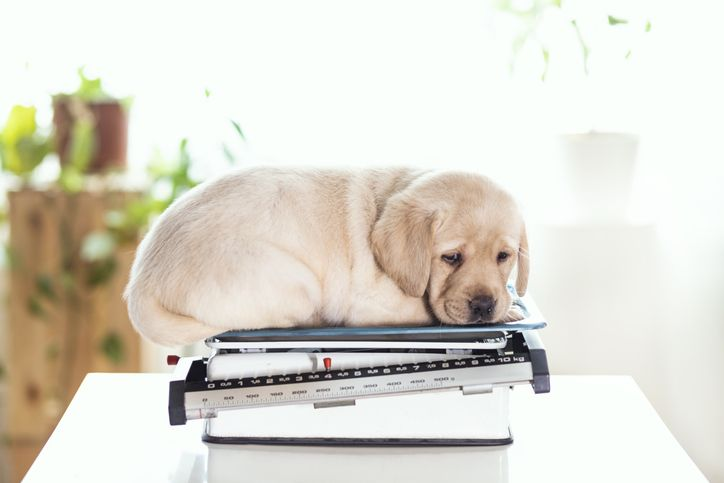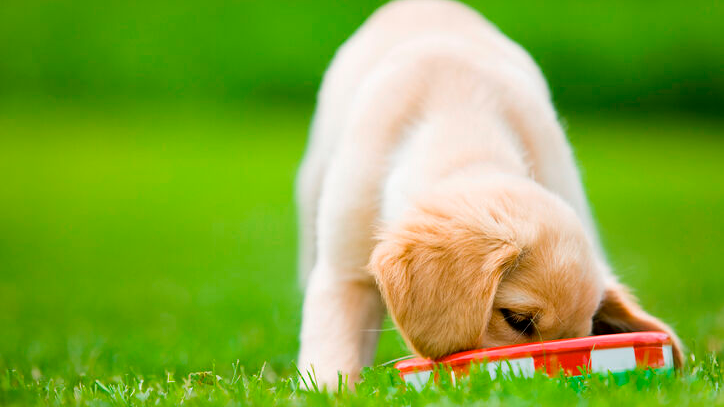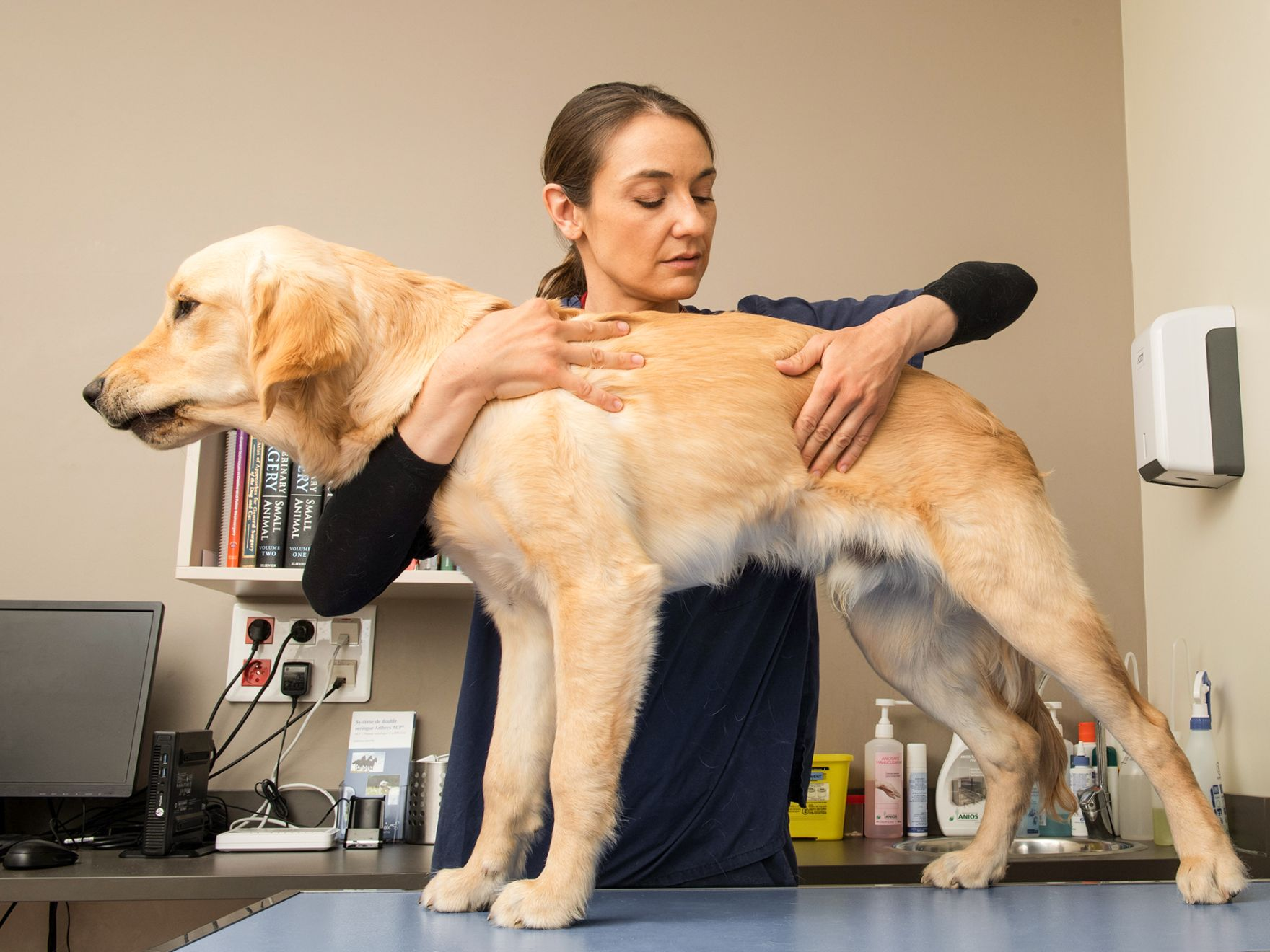What is a healthy puppy weight? Everything you need to know
Bringing a new puppy into your home is an exciting experience. Prioritising the health and well-being of your puppy on their path to maturity is a rewarding journey and a tremendous gift of caring. One crucial aspect of your puppy's overall health is their weight. Understanding what constitutes a healthy puppy weight and the role of proper nutrition and exercise in weight management are vital steps toward promoting optimal growth and development.

Your puppy’s development: understanding puppy growth and weight
While every puppy is different, there are general weight ranges that can provide a starting point for determining if your puppy is growing as expected. It's important to note that these ranges are approximate and weight gain in puppies can vary depending on your puppy’s breed, genetics, exercise level and nutrition.
Different breeds have varying growth patterns and body structures. Small and toy breeds such as Chihuahuas or Pomeranians reach their adult weight by around eight to ten months of age whereas large and giant breeds such as the Saint Bernard or Great Dane can take 18 months to two years to reach their adult weight. When you consider that adult toy breeds weigh around 20 times their birth weight and adult giant breeds weigh around 100 times their birth weight you can appreciate how proper nutrition with the appropriate amounts of protein, fats, carbohydrates, vitamins and minerals is vital for healthy growth.
General weight guidelines and puppy feeding schedule
Puppies need a lot of energy to grow. While it's important to provide your puppy with proper feeding and nutrition, overfeeding can lead to an overweight puppy. Excessive weight gain and obesity can be detrimental to their health, leading to a number of issues and diseases such as joint problems, diabetes, heart disease and a shortened life span. It also makes getting around harder for them. Understanding their nutritional needs at different stages of development will help you choose the correct food for healthy weight gain. Of course, it’s always a good idea to consult with your vet for precise nutritional advice tailored to your puppy’s specific needs.
At birth, puppies typically weigh between 100 to 600 grams (3.5 to 14 oz), depending on the breed. During the first few weeks of your puppy's life, they will rely solely on their mother's milk for sustenance. The mother's milk provides essential antibodies and the vital nutrients crucial for their initial growth.
Around the age of four to six weeks, puppies begin the weaning process and can gradually start transitioning to solid food. Introduce a high-quality puppy food such as a mousse or a dry recipe moistened with warm water or puppy milk formula to make it easier for them to consume as a porridge. Initially, they may only eat small amounts, but over time, they will rely less on their mother's milk and more on solid food.
At around eight weeks of age your puppy will be fully weaned—in other words, they will be eating independently—and you will need to establish a regular feeding schedule. On average, at three months of age, small breeds will weigh around 2-3 kg (4.4 to 6.6 lbs) whereas giant breeds will weigh between 18-20 kg (39.5 to 44 lbs). During this period they should be fed four meals a day, usually every four to six hours. Dividing their daily food intake into smaller, frequent meals helps prevent digestive issues and provides a steady supply of energy throughout the day. Which they will definitely need with all that puppy energy being burned!
Choose a high-quality puppy food recommended by your veterinarian, breeder, shelter or pet food supplier. Look for formulas specifically designed for puppies— they should have the appropriate balance of nutrients to support your puppy’s rapid growth. Follow the feeding guidelines on the packaging but keep in mind that each puppy's needs may vary based on their breed, size, and activity level.
Around three to six months of age you can reduce the number of meals to three per day. This adjustment aligns with their increasing capacity to digest and process larger amounts of food at one time.
Continue to monitor your puppy's weight and body condition to ensure they are growing at a healthy rate. If your puppy is underweight you will easily feel their ribs protruding. If your puppy is overweight it will be difficult to feel the ribs. Giving your puppy treats is fine, especially as a reward during training, but remember to account for these out of your puppy’s recommended total daily calories. Adjust meal portion sizes accordingly, following the guidance provided by your vet.
By six months, most puppies are ready to transition to two meals a day. During this stage, your puppy's growth rate will start to slow down and their nutritional needs will become more stable. It's important to continue feeding them a high-quality puppy food until they reach adulthood. Small breeds will reach their adult weight of between 4-10 kg (8.8 to 22 lbs) by around ten months of age, medium breeds reach a weight of around 18-25 kg (39.5 to 55 lbs) by twelve months.
For most breeds, once your puppy reaches their first birthday they are considered an adult and can be transitioned to adult dog food. Note that large and giant breeds will continue to develop for another six to twelve months to reach an adult weight that can be over 40 kg (around 88 lbs). As always, consult your vet to determine the ideal time to make the switch. And choose a well-balanced adult formula that suits your dog's size and breed.
Healthy growth is a gradual process and each puppy is unique. Some puppies may experience growth spurts while others may have slower growth patterns. As long as your puppy is active, playful and maintaining a healthy body condition, everything should be on track. However, it's always best to consult your vet to ensure your puppy's growth is going well and to address any specific concerns related to their individual circumstances. Even if you feel a little uncertain or feel something isn’t quite right, trust your intuition and call your vet for reassurance and advice.
Five steps to help control your puppy’s weight
Maintaining a healthy weight is essential for the overall well-being of your puppy. Obesity in dogs can lead to various health problems including joint issues, heart disease, and a decreased lifespan. To help you to maintain your puppy at a healthy weight here are some tips to follow:
Regular weigh-ins
Track your puppy’s weight gains or losses with regular weigh-ins using digital scales or use tracking apps to record trends. Growth charts can help you assess if your puppy's weight is within the expected range. However, keep in mind that these charts are only a general reference and individual variations can occur.

Body condition
Regularly assess your puppy's body condition to ensure they are maintaining a healthy weight and healthy shape. Gently run your hands along their ribcage. You should be able to feel their ribs without excessive padding but they shouldn't be overly prominent either. Additionally, observe their waistline from above—there should be a visible inward curve between the ribcage and hips. If you notice your puppy becoming overweight or underweight, consult your vet to adjust their feeding regimen.

Portion control
It's important to feed your puppy appropriate portion sizes based on their age, size and activity level. Overfeeding can lead to excessive weight gain while underfeeding can result in malnutrition. Be mindful of the feeding guidelines provided on the food packaging but remember that they are general recommendations and may need adjustment based on your puppy's individual needs. Be mindful of feeding too many treats. Treats play a role in training and positive reinforcement, however, excessive treats can contribute to weight gain. Favour healthy options (once they hit the two-month mark) such as ROYAL CANIN® Educ, which is a low-calorie alternative to conventional treats, containing less than 3 kcal/unit. You can also use small portions of their kibble during training sessions. Just remember, total daily calorie intake from treats count so adjust meal portion sizes accordingly. Giving your puppy praise and pats as their reward also works well!

Establish a feeding routine
Establish a regular routine by feeding them in the same place at the same time and by using the same food bowl. Avoid leaving food out all day for your puppy to eat whenever they want as this can lead to overeating and weight gain. Allow your puppy a designated amount of time, typically around 15 to 20 minutes, to finish their meal. If they haven't finished within that time, remove the food until the next scheduled meal. This method helps regulate their intake and prevents overeating.

Regular exercise
Alongside a balanced diet, regular exercise for your puppy is important to help maintain a healthy weight, provide mental stimulation and encourage good muscle development. Engage in age- and breed-appropriate physical activities and playtime, in a safe environment, to keep them active and burn off excess energy. Find out what your puppy enjoys. A giant breed like a Newfoundland might enjoy a swim at the seaside but a toy breed like a Pomeranian would probably baulk at the shoreline wavelets. If you’re unsure about the right activity for your puppy, ask your vet for advice.

Remember, every puppy is unique, and their nutritional needs and exercise requirements may vary. It's always advisable to consult with your veterinarian for personalised feeding recommendations and guidance specific to your puppy's breed, size, and age. By following a balanced feeding schedule and monitoring your puppy's weight, you'll set them on the path to a healthy and vibrant life.
Related articles
Like & share this page

